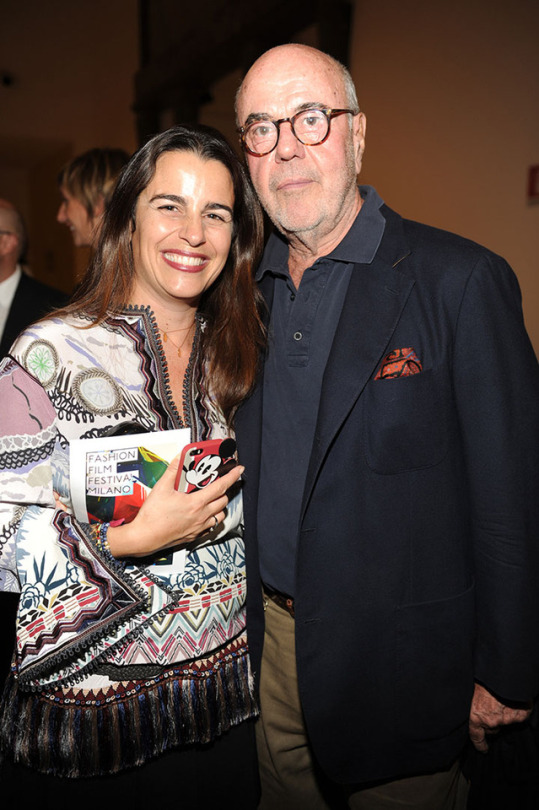#Gimmo Etro
Explore tagged Tumblr posts
Text
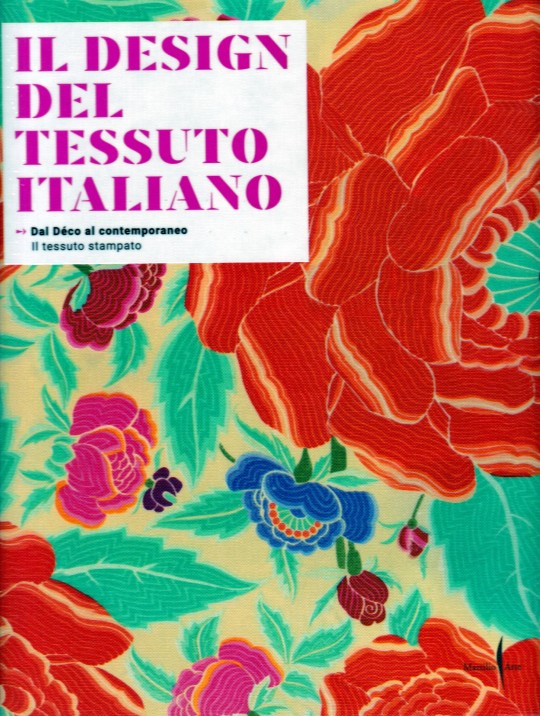
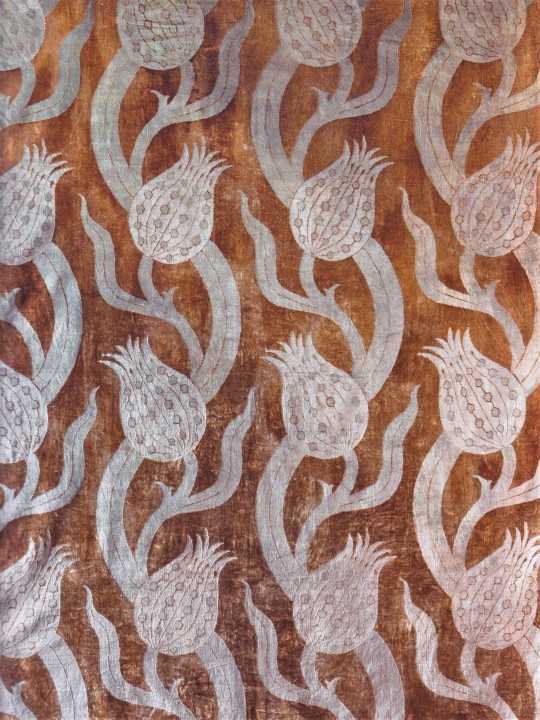
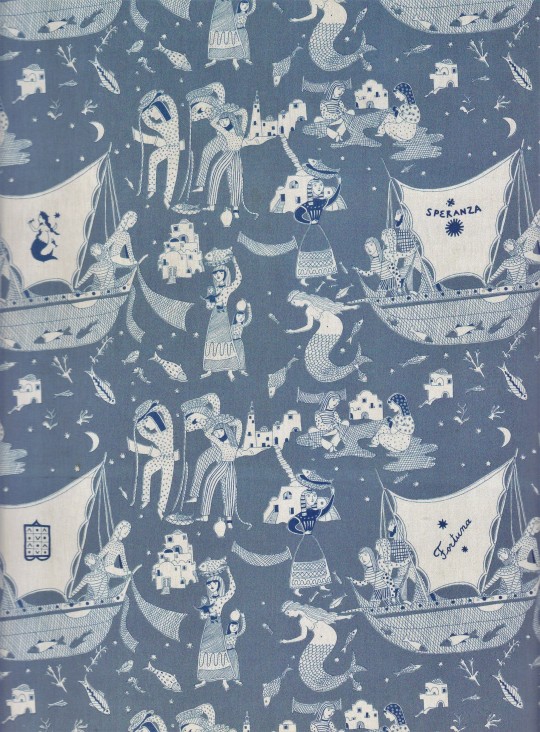

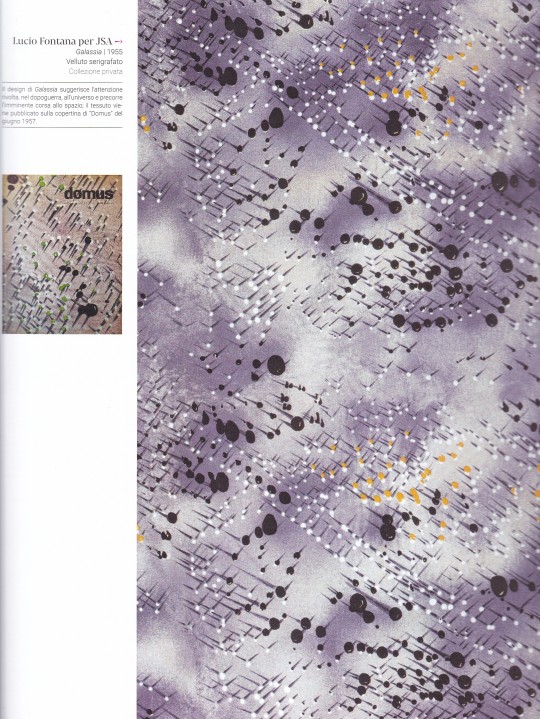
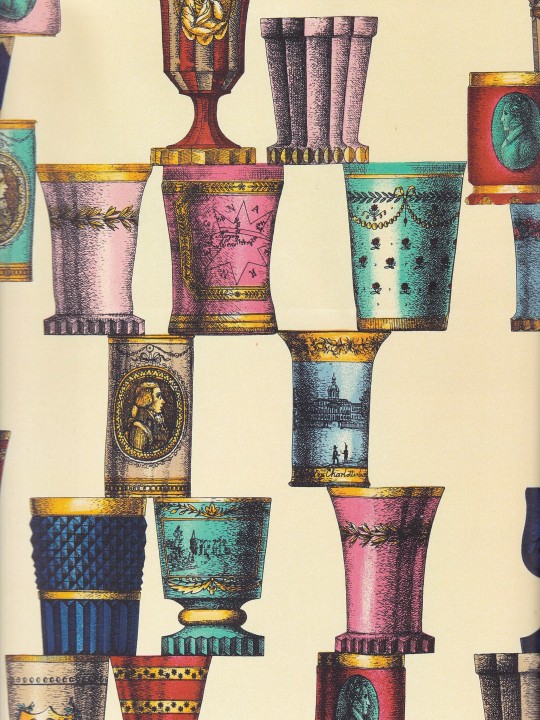
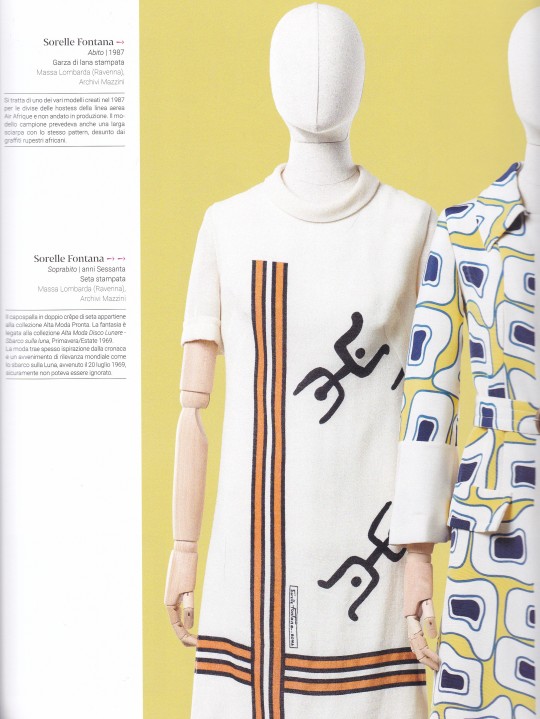

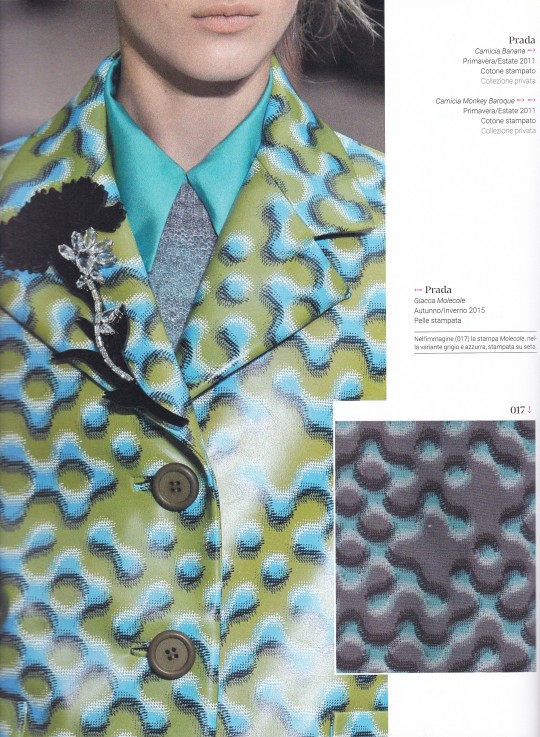
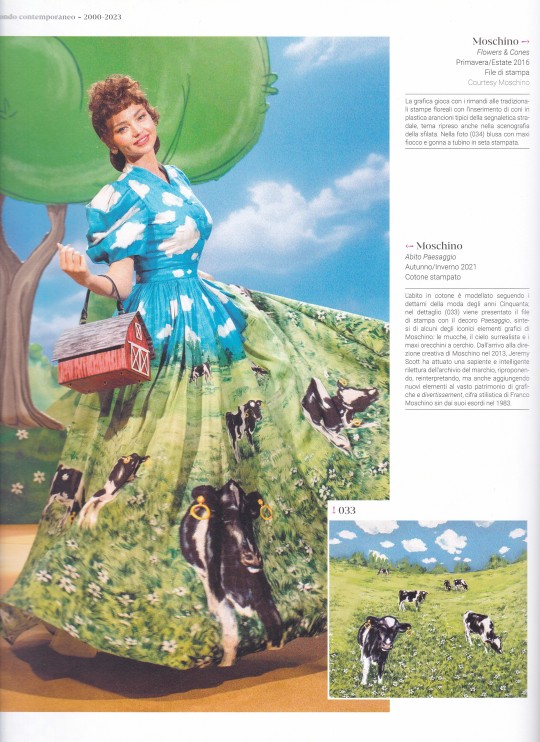
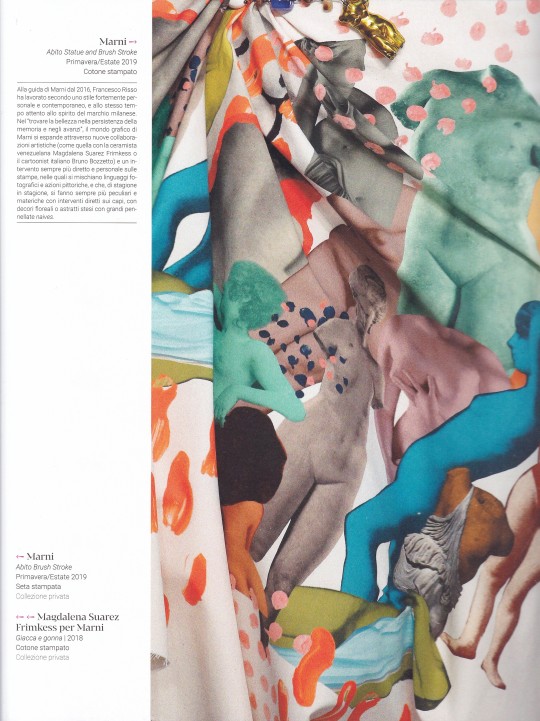
Il design del tessuto italiano
Dal Déco al contemporaneo Il tessuto stampato
Vittorio Linfante, Massimo Zanella
Marsilio Arte, Venezia 2023, 240 pagine, oltre 500 illustrazioni, 24,8 x 29,8 cm, ISBN 9791254630907
euro 48,00
email if you want to buy [email protected]
Dalle sperimentazioni di Lucio Fontana e Gio Ponti ai motivi optical di Germana Marucelli e caleidoscopici di Emilio Pucci; dagli effetti trompe-l'oeil di Roberta di Camerino alle sensibilità pop di Ken Scott, Elio Fiorucci, Gianni Versace e Franco Moschino; dal lavoro sull'heritage di Prada, Valentino e Marni alla valorizzazione dell'archivio aziendale di Missoni, fino alle ibridazioni grafiche di Maison Laponte, Gentile Catone, Colomba Leddi e IUTER: artisti, stilisti, designer e aziende che hanno contribuito a costruire la fama del tessuto italiano nel mondo dai primi del Novecento al contemporaneo. Una storia che si intreccia profondamente con la nascita del concetto di made in Italy, contribuendo in modo significativo alla fama internazionale dell'Italia come baluardo della moda e del design di alta qualità. Oltre 500 illustrazioni, fotografie e disegni preparatori - molti inediti e provenienti da archivi aziendali e privati - raccontano i più importanti successi creativi del nostro Paese.
05/06/23
orders to: [email protected]
ordini a: [email protected]
twitter:@fashionbooksmi
instagram: fashionbooksmilano
designbooksmilano
tumblr: fashionbooksmilano
designbooksmilano
#design tessuto italiano#Fortuny#Lucio Fontana#Fornasetti#Sorelle Fontana#Gianni Versace#Prada#Moschino#Marni#Gio Ponti#Germana Marucelli#Emilio Pucci#Roberta di Camerino#Ken Scott#Fede Cheti#Fiorucci#Valentino#italian textile design#Gimmo Etro#Lancetti#Brunetta#textiles books#fashion books#fashionbooksmilano#designbooksmilano
25 notes
·
View notes
Text
MET Gala List Part Two
I made a part two. 😊 Also, the gala is TODAY!
(Remember, this is just a list of celebrities I would invite if I was in charge of it.)
201. Sara Paulson 202. Julia Roberts 203. Brandon Maxwell 204. Pierpaolo Piccioli (designer for Valentino) 205. Yara Shahidi 206. Gemma Chan 207. Laverne Cox 208. Lucy Boynton 209. Naomi Campbell 210. Penelope Cruz 211. Salma Hayek 212. Gwyneth Paltrow 213. Rami Malek 214. Sienna Miller 215. Aurora James 216. Carey Mulligan 217. Charli XCX 218. Alexa Chung 219. Stella Maxwell 220. Sofía Sánchez Barrenechea 221. Dapper Dan 222. Aquaria 223. Normani 224. Camila Coelho 225. Deepika Padukone 226. Tommy Hilfiger 227. Violet Chachki 228. Nasiba Adilova 229. Shailene Woodley 230. Ansel Elgort 231. Joe Jonas 232. Megan Fox 233. Laura Haddock 234. Orlando Bloom 235. Willow Smith 236. Jason Sudeikis 237. Ewan McGregor 238. Coco Rocha 239. Ralph Lauren 240. BTS - Jungkook, V, Park Ji-min, Jin, Suga, RM, J-Hope 241. Blackpink - Jennie, Lisa, Rosé, Jisoo 242. Doja Cat 243. Sam Claflin 244. Kiera Knightley 245. Alexina Graham 246. Rachel Zegler 247. Sophia Lillis 248. Sam Smith 249. Mimi Cuttrell 250. Aubrey Plaza 251. Adam Driver 252. Kate McKinnon 253. Aidy Bryant 254. Thomasin McKenzie 255. Maddie Ziegler 256. Kristen Bell 257. Idina Menzel 258. Michelle Dockery 259. Chris Evans 260. Peter Dinklage 261. Luke Evans 262. Liam Hemsworth 263. Robert Pattinson 264. Christian Louboutin 265. Stuart Weitzman 266. Nicola Glass (designer for Kate Spade) 267. Michael Kors 268. Manolo Blahnik 269. Alberta Ferretti 270. Kim Jones (designer for Fendi) 271. Viktor Horsting 272. Rolf Snoeren 273. Richard Madden 274. Giorgio Armani 275. Isabel Marant 276. Nicky Zimmermann 277. Simone Zimmermann 278. Gimmo Etro 279. Austin Butler 280. Abigail Breslin 281. Lana Del Rey 282. Natalia Dyer 283. Molly Ringwald 284. Adele 285. Giambattista Valli 286. Tamara Ralph 287. Michael Russo 288. Isla Fisher 289. Anastasia Soare (founder of Anastasia Beverly Hills) 290. Charlotte Tilbury 291. Allan Avendaño 292. Danielle Priano 293. Pier Gelardi (founder of Refinery29) 294. Philippe von Borries (founder of Refinery29) 295. Christene Barberich (founder of Refinery29) 296. Justin Stefano (founder of Refinery29) 297. Sara Moonves (editor-in-chief for W Magazine) 298. Arnaud de Contades (CEO of Marie Claire Magazine) 299. Anne Fullenwider (editor-in-chief of Marie Claire Magazine) 300. Lauren Conrad 301. Miles Socha (editor-in-chief of Women’s Wear Daily) 302. Jay Penske (CEO of Women’s Wear Daily) 303. Jessica Pels (editor-in-chief for Cosmopolitan Magazine) 304. Rob Zangardi 305. Mariel Haenn 306. Michael Fassbender 307. Elliot Page 308. Betsey Johnson 309. Jonathan Groff 310. Anna Faris 311. Meryl Streep 312. Brie Larson 313. Renée Elise Goldsberry 314. Jasmine Cephas Jones 315. Cindy Crawford 316. Nicholas Hoult 317. Zac Posen 318. Taraji P. Henson 319. Joan Smalls 320. Samira Nasr (editor-in-chief of Harper’s Bazaar Magazine) 321. Lily James 322. Thandiwe Newton 323. Ciara Bravo 324. Mary Elizabeth Winstead 325. Phoebe Dynevor 326. Allison Janney 327. Daniel Levy 328. Claire Foy 329. Lisa Eldridge 330. Kale Teter 331. LaQuan Smith 332. Lacy Redway 333. Alexandra DiRoma 334. Alex White (fashion director for Elle Magazine U.S.) 335. Carine Roitfeld (founder and editor-in-chief of CR Fashion Book) 336. Carine Backoff 337. Zoey Grossman 338. Tyler Shields 339. Greg Williams 340. Cass Blackbird 341. Timothée Chalamet 342. Virgil Abloh 343. Owen Gould 344. Tobi Henney 345. Marc Eram 346. Charlotte Prevel 347. Romy Soleimani 348. Rebecca Minkoff 349. Joseph Altuzarra 350. Gabriela Heart (designer for Chloé) 351. Hedi Slimane (designer for Céline) 352. Phoebe Philo (designer for Céline) 353. Jonathan Anderson (designer for Loewe) 354. Saweetie 355. Kelsey Deenihan Fisher 356. Lorde 357. Demna Gvasalia (designer for Balenciaga)
For this list, I include some makeup artists, fashion photographers, hairstylists, editor-in-chief for magazines, and the CEO of magazines. I still don’t understand the point of inviting athletes, so I left them off.
Now, here is who I would NOT invite...
59. Machine Gun Kelly 60. 21 Savage 61. French Montana 62. Chris Pratt 63. Bella Thorne 64. Scarlett Johansson 65. Jennifer Lawrence 66. Emma Watson 67. Vanessa Hudgens 68. Sacha Baron Cohen 69. Dylan Sprouse 70. Barbara Palvin 71. Ashton Kutcher 72. Sarah Jessica Parker 73. Zayn Malik 74. Olivia Jade 75. Channing Tatum 76. Paris Hilton 77. Nicky Hilton
♡ September 3, 2021 September 13, 2021 ♡
8 notes
·
View notes
Text
Etro
Etro #etro #perfettamentechic #felicementechic #lynda #creatoridellostilo #creatoredellamoda
Etro, famosa per i suoi disegni paisley (disegno ottenuto utilizzando il boteh o buta, un motivo vegetale a forma di goccia di origine persiana), è una casa di moda italiana fontata nel 1968 da Gerolamo “Gimmo” Etro, come azienda tessile, dedicandosi esclusivamente alla produzione di tessuti di arredamento: dalle stoffe in cachemire e seta, fino ad arrivare al lino ed al cotone, ogni tessuto…
View On WordPress
#Camicia cooked#Creatore della moda#Creatore di stile#Etro#Gerolamo Etro#Gimmo Etro#Ippolito Etro#Jacopo Etro#Jacquard#Kean Etro#paisley#Rajasthan#Veronica Etro
0 notes
Photo
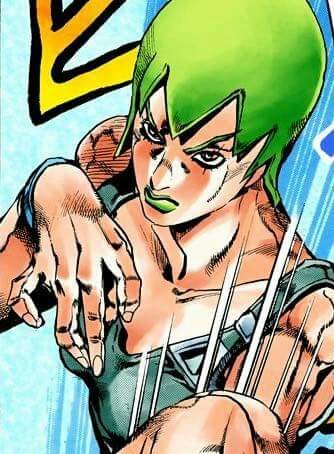
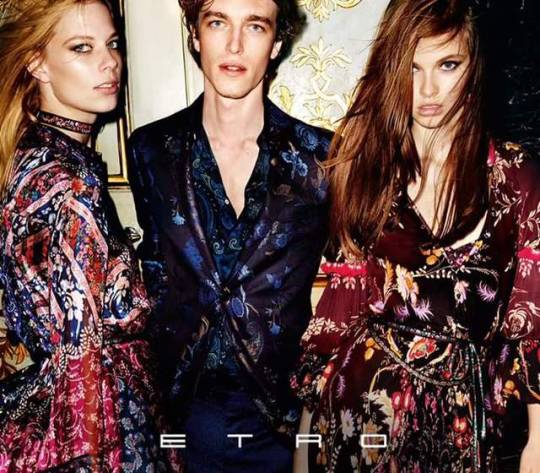
Fashion references in JoJo’s Bizarre Adventure
The prisoner whose body F.F. takes over is named for the Italian fashion brand “Etro”, founded in 1968.
“Etro” produces a menswear and womenswear line, in addition to accessories, fragrances, and other home products.
“Etro” was founded by Gerolamo “Gimmo” Etro as a textile design company.
The company’s headquarters is located in Milan on Via Spartaco, and was refurbished in 1977. The headquarters includes textile art archived in their in-house library.
After a trip to India made by “Etro” executives, the furnishing textiles line made its debut in 1981 The “swirling” paisley design found on this trip is now “synonymous” with the label according to “Elle Magazine”.
#jojo#jojo no kimyou na bouken#jojo's bizarre adventure#jjba#le bizzarre avventure di jojo#manga#manga girl#so#stone ocean#part 6#f. f.#foo fighters#etro#fashion#fashion references#fashion references in jojo#fashion references in jojo's bizarre adventure#is that a jojo reference#is that a jojo's reference
34 notes
·
View notes
Text
Fashion designer, Gualtiero Walter Albini was born in Busto Arsizio, Italy, on March 3, 1941.
Although his family preferred ifhe coursed classical studies, such as law and medicine, Albini decided to join the Institute of Arts, Design and Fashion in Turin and at 16 he was the only man on the course.
At just 17 years old he started to contribute to magazines and newspapers, which published his drawings of haute couture fashion shows in Rome and after Paris.
In 1961 he moved to Paris, where he met Coco Chanel. Over the time they spent together, the designer helped him increase his knowledge of fashion, polished him and sometimes helped him by editing his collections. She was also one of the sources of constant inspiration for Albini.
In 1963 he created his first collection for Gianni Baldini.
Soon after he met the fashion designer Mariuccia Mandelli known as Krizia. In 1965 he moved to Milan, and formed a partnership with the designer that lasted three years. With this partnership he gained a lot of technical and industrial knowledge, learning to deal with everything from knitting to the study of threads, from the production of clothes to the study of fabrics. In the last year of the partnership, Walter Albini also worked with the fashion designer Karl Lagerfeld who was at the beginning of his career.

Walter ALbini for Krizia. Second half of the 1960s.
In the late 1960s he worked for major Italian houses like Billy Ballo, Cadette, Cole of California, Montedoro, Glans, Annaspina, Paola Signorini and Trell.
Albini began a collaboration with Gimmo Etro, creator of Etro (who at the time worked as a fabric manufacturer), in which he was responsible for the design of the fabrics made.
In 1969, like Karl Lagerfeld, he participated in the “Idea Como” event, sponsored by the Italian Silk Producers Association, with the intention of showing which items would be used in 1970, with a union of color and style.
In 1970 he presented the Anagrafe collection for Misterfox with eight brides in long pink dresses and eight widows in short black dresses; shortly afterwards he presented a PréRafaelita collection that made clear his power to mix cultural passions and fashion; another example was the following collection, called Rendez-vous, which featured fabrics with prints and embroidery inspired by Art Deco.
By this time Albini was very successful and was one of the most sought after Italian designers, but unfortunately in many cases he was unable to sign his work, maintaining his own brand as a dream.
Until the Ftm group bought the right to distribute clothes made by him. Thus, for the first time Albini worked with 5 different brands from different sectors in a single project, creating a union and helping him to consolidate his style.
Creating an unique line, to present it also in a unique way, he chose, instead of the Bianca room in the Pitti Palace in Venice, to parade it in Milan, at the Circolo del Giordino. Caumont, Ken Scott, Krizia, Missoni and Trell also adopted the new place, creating what is considered the birth of the Italian ready-to-wear and Italian fashion week as we know it today.
This was an important moment for fashion, as the way the clothes were produced and the relationship with the consumer was changing. Haute couture as it was in the 1950s, for example, was giving way more and more to ready-to-wear and the new relationship with the fashion designer.
Milan was also closer to the factories for both fabric manufacturing and the machines and tools used to produce a fashion product. It was a time when all fashion production was being rethought.
With the Fall / Winter 1971-72 collection he also innovated in the way of exhibiting products in specialized magazines. Now he presented only drawings and used the concept of “groupage” in which the clothes were displayed in a single block, according to the designer; magazine pages were also paid by suppliers and not by brands or designers.
This slideshow requires JavaScript.
In the following collection, Spring / Summer 1972, known as “La Bardierine” or “Le Marinarette” Albini presented a model with bare breasts and some male models. One of the highlights paraded by the male models was the loose shirt, which until then had always been tight. In addition, he also worked with Etro designing the fabrics they produced.
The media now followed him calling him the “new Italian star”.
In April 1972 he presented the Fall / Winter 1972-73 collection, which was very rich and long.
The international media hailed him and considered him as strong as Yves Saint Laurent. Meanwhile, the Italian media treated him more coldly.
Discouraged he broke the contract with all suppliers and distributors with the exception of Misterfox, for which he presented the Spring / Summer 1973 collection, with it’s fashion show in Milan.
The dream of having his own brand was still alive and he decided to create the Walter Albini brand, within Misterfox, and for that he created his famous WA logo.

Walter Albini’s WA logo.
Finally, with the help of Mrs. Joan Burnstein, owner of the Browns brand, walter Albini was able to present his own collection in which 6 male and 27 female models were presented in London. The collection was titled The Great Gatsby, in honor of one of his heroes, F. Scott Fitzgerald.
In this show he presented the unstructured coat and the shirt coat, important pieces for Italian fashion. It was the first time that the strategy of presenting a first line of the collection with stronger and more significant models with restricted sales, which was later supported by a second line of the same collection with more basic and easily accepted models, with sales pretensions for the mass, was used.
In 1973 he opened a showroom in Milan. The space was all mirrored and used to showcase Misterfox collections.
In Venice he bought a house, and presented the WA Autumn / Winter 1973-74 collection at Caffè Florian, which was presented again in New York.
This slideshow requires JavaScript.
At this point Walter Albini had international recognition, but even so he did not have the support of any solid commercial organization, so the following years, 1974 and 1975, were years of crisis, even though he continued to amaze people with his collections, creating even paisley and millefiori prints and those inspired by cashmere, which were successful in the clothing and furniture department.
Throughout his career Albini created several prints ranging from polka dots, stars, stripes to faces, dancers, dogs and even the face of the Prince of Wales.
He specialized in creating a total look, and even went so far as to create coordinated collections that combined his clothes with home furnishing accessories published in Casa Vogue magazine.
For the Fall / Winter 1974-75 collection he decided to make an exhibition, in his showroom in Milan, of illustrations of the clothes made from 1962 to 1972.
Shortly after the exhibition he ended the contract with Misterfox and left the Milan showroom.
He then traveled extensively, especially to India. These trips inspired his next collection. And yet in 1974 he innovated again by parading a men’s collection alone, separate from the women’s.
In 1975, in partnership with Giuseppe Della Schiava, a silk supplier, Albini presented his first haute couture collection for Spring / Summer. The collection was inspired by Chanel and the 1930s, two of his passions. Next came the Fall / Winter collection from 1975-76, in which the fashion show’s soundtrack consisted of 25 different versions of the song La Vie en Rose, it was completely pink and was also inspired by Chanel and Paul Poiret. As for the ready-to-wear collection, he again partnered with Trell and presented some of his most famous collections such as “Guerriglia Urbana”, “India” and “Folk”.
The fall / winter 1975-76 men’s collection was presented in a restaurant in Milan. The clothes were worn by both men and women, reinforcing the concept of unisex.
This slideshow requires JavaScript.
The Spring / Summer collection was also presented in a restaurant this time featuring beige and black busts that reproduced his image. For the Fall / Winter 1976-77 collection he presented a series of portraits of himself wearing clothes from the collection; these photos were taken by his photographer friends.
Among the collections made by Albini that are considered “cult” is the one made in 1977 at Galeria Anselmino in Milan. To display the collection, 12 panels were presented with a mix of clothes that were lent by friends and even by himself, reinforcing the concept that what really matters is the art of knowing how to mix clothes and accessories.
In 1977 he was responsible for an exhibition of penis personalized as celebrities and signed with their names; some of the “honorees” were Karl Lagerfeld, Yves Saint Laurent, Mickey Mouse and even the devil.
This slideshow requires JavaScript.
In 1978 Albini ended his contract with Trell and relaunched his brand, Walter Albini, with Mario Ferrari, presenting three more successful collections.
The Fall / Winter 1978-79 collection was long awaited, was showcased in front of 3 thousand spectators and was a great success. The subsequent collection, Spring / Summer 1979, was also a success.
The Fall / Winter 1979-80 collection was the last with the partnership with Ferrari.
With the arrival of the new 1980s the media was looking for something new, and started to put Albini aside. In the midst of day-to-day anxieties and financial difficulties, the designer’s creativity was shaken.
He still made collections for Helyette, Lanerossi, Lane Gravitz and Peprose, but the media had already lost interest.
This slideshow requires JavaScript.
Walter Albini lost his motivation, and on May 31, 1983 he died in Milan at the age of 42.
The fashion designer was responsible for several collections that liberated women with clothes inspired frequently by Chanel, the 1920s and 1930s, the designer Poiret and the exoticism of places like India and even some aspects of Chinese culture. He innovated not only with pieces of clothing but also in the way of presenting them, innovating in the use of soundtrack and show locations; in the use of unisex models as well as in the decision to hold a male-only fashion show.
This slideshow requires JavaScript.
Bibliography: Allan, Georgina O’Hara; Enciclopédia da Moda: De 1840 À Década de 90: Companhia das Letras, 2010.
https://amodaresumida.wordpress.com/2016/10/09/albini-walter/
http://walteralbini.org/en/biografia/
http://www.vogue.it/en/news/encyclo/designers/a/walter-albini
http://www.fashionencyclopedia.com/A-Az/Albini-Walter.html
https://fashionheritage.eu/walter-albini-power-to-imagination/
https://www.magazzino26.it/walter-albini/?lang=en
https://fashionunited.uk/news/fashion/fashion-s-unsung-designers-walter-albini/201603301990
ALbini, Walter Fashion designer, Gualtiero Walter Albini was born in Busto Arsizio, Italy, on March 3, 1941. Although his family preferred ifhe coursed classical studies, such as law and medicine, Albini decided to join the Institute of Arts, Design and Fashion in Turin and at 16 he was the only man on the course.
1 note
·
View note
Text
發問!怎麼把基本款穿時髦,先問你身上長花沒?
Text / 美麗佳人Marie Claire Photo / ETRO、INSTAGRAM
為什麼有人可以穿基本款也時髦,因為他們懂得用大膽的印花劃重點啊!不會劃重點的女人,沒有未來,妳懂嗎!?
時常有人問,都是穿基本款為什麼有人看起來特別時髦?對,舞台左前方的小姐說的沒有錯,是顏值。

如果顏值沒人家高怎麼辦,也不用說什麼等投胎這種喪氣話,好好穿衣服總還是能贏點分數好嗎!?
過去的春夏流行許多經典圖紋���像是條紋。但2017春夏總算是多了新意,許多品牌時裝秀紛紛多出大膽印花或圖騰,但一般人很難想像全身穿著印花上街。
身上有一件單品很忙,其他的就要很安靜,所以,慧川建議最好把印花和基本款做結合,妳的基本款就馬上有重點了,立刻比別人時髦286倍。

搭配丹寧
丹寧妳的衣櫥一定有個好幾件吧?與其配素色單品不如換上一件大膽印花單品

時尚部落客Sandra Semburg完美詮釋了丹寧極簡與印花有多速配。

搭配與黑白灰

黑白灰雖安全又經典,但看久了真的會打哈欠,這時如果妳可以再加上印花,那真是讓人耳目一新,美到讓人想取締。
而我們可以看看名人有多愛印花和圖騰,而且不要以為只有歐美明星愛,現在連韓星都吹起熱愛印花的風潮,從少女時代的泰妍和俞利,裴勇俊的老婆女星朴秀真到韓國女團春夏都讓印花上身了。

而且這些印花單品都剛好來自ETRO這個經典品牌。有關注時尚的水水都知道這個來自義大利的品牌ETRO,它充滿幻想又華麗的設計非常獨樹一格

ETRO以飛馬作為品牌logo,代表創造力、善與美,這也是ETRO一直在追求的品牌內涵。而ETRO設計靈感來自東方,特別是印度文化,經過不斷改良及創新,展現了復古奢華和異域風,具有濃濃的皇室感又不俗氣,這也是為什麼它能讓超素單品質感提升百倍的原因。


創辦人Gimmo Etro把繁複華麗的變形蟲圖紋(paisley),搭配鮮艷耀眼的服裝色彩用在絲、綢、喀什米爾毛亞麻等材質,交織成各種美到不要不要的華服。

ETRO先生在一次印度之旅中看到Paisley圖案,大為驚豔,1981年第一次發表在ETRO的時裝發表會上大受喜愛,之後就成為ETRO的品牌象徵。而ETRO美麗的印花也非常適合穿去音樂祭,看看這些圖騰搭配基本款有多美,要不要這麼好看啊!妳穿的不是衣服,是藝術!

總之,春夏要穿時髦,快從身上種點花吧〜!
【本文由Marie Claire美麗佳人提供,未經授權,請勿轉載!】
延伸閱讀 別說妳一定都會!加個步驟時髦感立刻提升的10款編髮 【街拍速報】不學你就落伍了!潮人教你用Converse帆布鞋化平凡為時尚!
2 notes
·
View notes
Photo
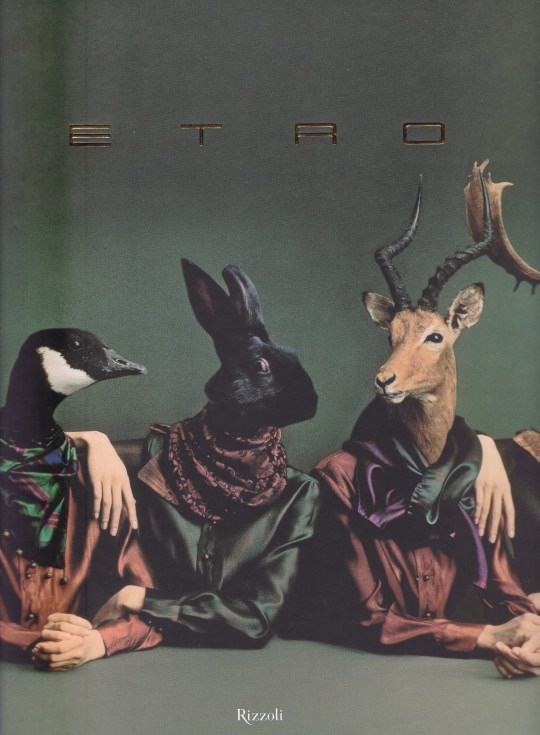




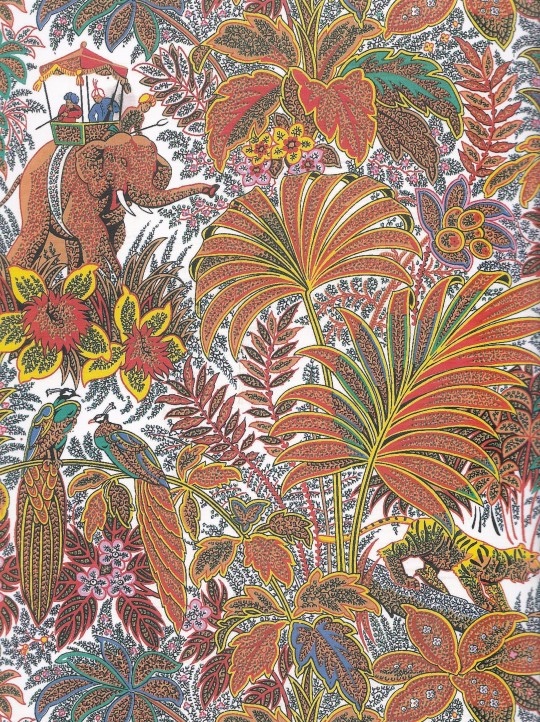


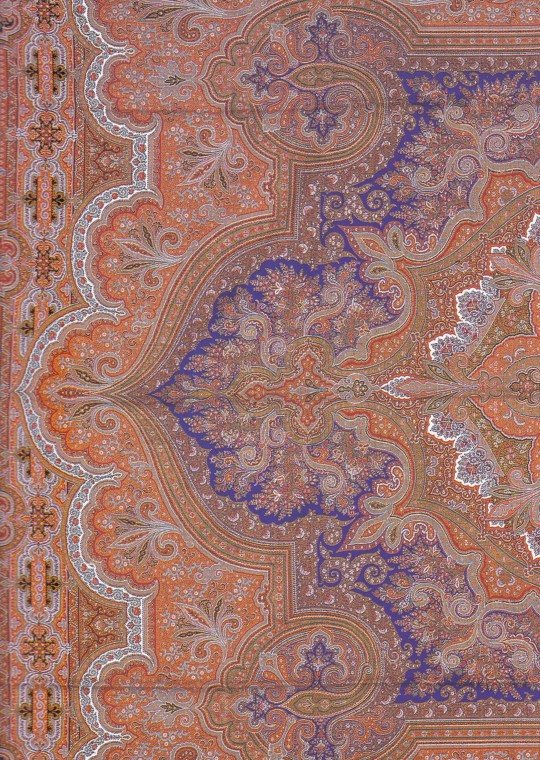

Etro
a cura di Renata Molho, testi di Carlo Petrini , Liu Bolin , Robert Penn , Katsumi Komagata , Leatrice Eiseman, Jiten Thukral con Sumir Tagra, Monique Lévi-Strauss,
Rizzoli, Milano 2014, 376 pagine, rilegato, 24.77 x 3.76 x 30.66 cm, ISBN 9788817071055
euro 180,00 out of print at the publisher
email if you want to buy :[email protected]
Un volume monografico racconta per la prima volta il mondo, lo stile, il linguaggio unico della casa di moda Etro. Il libro, curato dalla giornalista italiana Renata Molho ed edito da Rizzoli, non ripercorre cronologicamente la storia del brand nato alla fine degli anni ’60, ma delinea un itinerario geografico ed immaginifico attraverso 7 stanze / temi (Natura, Arte, Viaggio, Gioco, Colore, New Tradition, Paisley) che attraverso immagini e pensieri ricostruiscono l’universo Etro. Un mondo, colto, raffinato ed elegante, dietro cui si nascondono la vocazione alla curiosità e l’amore per storia, arte, culture diverse che hanno accompagnato la casa di moda fin dal suo esordio.
Ad aprire la porta d’accesso a ciascun tema è uno dei componenti della famiglia Etro che dialoga sull’argomento insieme ad un amico illustre che con il tema vanta un legame: di Natura insieme a Carlo Petrini che vede in essa un bene da tramandare, d’Arte attraverso l’ironico e poetico linguaggio di Liu Bolin, di Viaggio con Robert Penn che ne ha fatto uno stile di vita, di Gioco con l’artista Katsumi Komagata, di Colore con Leatrice Esiselman che ha dedicato al tema profonde riflessioni, di New Tradition con gli artisti indiani Jiten Thukral e Sumir Tagra che hano ripensato il motivo della foglia dell’albero della vita, dell’iconico Paisley con la studiosa del Cachemire Monique Lévi-Strauss.
01/07/21
orders to: [email protected]
ordini a: [email protected]
twitter: @fashionbooksmi
instagram: fashionbooksmilano, designbooksmilano tumblr: fashionbooksmilano, designbooksmilano
#Etro#Gimmo Etro#Kean Etro#Veronica Etro#cachemire#paisley#Renata Molho#Jacopo Etro#Ippolito Etro#casa di moda#italian fashion#fashion books#fashionbooksmilano#rarebooks
17 notes
·
View notes
Text
J. Lo Wins Milan. Fashion Comes Second.
The moment that ate Milan Fashion Week occurred at the end of the Versace show.
People had been promised a special something, but no one knew what it was. The lights went down, a soundtrack crescendo began to build, and then — Jennifer Lopez! Age 50! In a new version of the jungle print dress she wore to the Grammys in 2000.
You know, the one that was cut down to her navel and up to her crotch, and set off so many digital searches back in the day that, in the myth of the internet and fashion, it is said Google created image search because of it (a more plausible version of the story is that it was part of the reason; a big part, sure, but still — a part).
The dress had been given a bit of an update, to be sure — less fabric on the sides, the sleeves were gone, there were jewels all over the matching bikini bottoms, and iridescent palm fronds bristled like epaulets on the shoulders. But those were details; the effect was the same. Bags were clutched. The whole audience rose as one. Phones came out and were wielded like knives, each one slicing off a section of her walk for the posting.
Mea culpa. But if ever there was a finale that crystallized just how much fashion had moved on — or not — since the turn of the millennium, that was it.
Back in the day, of course, there was no Instagram or live stream; people mostly viewed shows with their actual eyes as opposed to through the lens of their tiny cameras; designers only did two collections a year (or two we knew of); editors and glossy magazines still served as the conduits of choice for fashion information; diversity was pretty much nonexistent; and even if fashion people had read “Silent Spring” in school, they probably thought it had nothing to do with them, or their jobs.
It is tempting to say: How things have changed! Except for Ms. Lopez of course; she looked exactly the same. If anything, more toned and worked out.
But then, so did most of Donatella Versace’s clothes: the sharp-shouldered little black coat dresses with big gold hardware; the jersey draped to show slices of side abs; the tie-dyed Medusa tees; the cobalt-and-jade or fire opal-spinel jungle print on pretty much everything from jeans jackets to sequined evening frocks fringed at the hem and dotted with spiky, three-dimensional alien blooms.
Which suggest the real takeaway is plus ça change, and all that. The fashion landscapes in New York and London may finally be in the throes of their own upheavals; the altered shapes of social and political life, a new balance of power, reflected in an evolution on the catwalk. But in Milan, the status quo — the one from 20 years ago — still rules. That’s as stultifying and frustrating as it sounds, even if it’s justified as “heritage” or “DNA.”
Of Sun and Earth and Staying in Place
Think about it this way: the day of the global climate strike, which also happened to be the day of the Versace show, when hundreds of thousands took to the roads of New York and Berlin and Sydney, in Milan it was just traffic as usual.
“Is there going to be a protest here?” visitors asked. Locals raised their eyebrows and shrugged. Later, there was some anticipation around the fact Giorgio Armani called his show “Earth” — but it turned out to be because it was inspired by the muddy colors of the land (dank browns, midnight blues), gradually lightening to morning mists.
Trousers were pleated at the hip and narrow at the calf or palazzo loose. Jackets were long or short, curving or boxy. Skirts were long and billowing, often sheer. There were some sporty references, a banana palm print and a fair amount of pastel sparkle. In the end, two models came out in glistening evening columns, torsos encased in stiff ruffled organza shells; each woman had one arm supporting her opposite elbow, which was cocked up and out to the side as if holding a cigarette en pose. Except, this being 2019, the hand was empty. That’s a metaphor, if anyone cared to contemplate it.
Meanwhile, at the Missoni show, dedicated to summer and held around a giant public swimming pool, Angela Missoni gave every guest a mini Olafur Eliasson solar lamp with the message: “Join us in holding hands with the sun, we are at a crucial point for our planet and need to take action.”
Then Ms. Missoni, like Ms. Versace and Mr. Armani, engaged in some aesthetic recycling, bringing 1970s dandy men and the free spirits who loved them to life in layers of ultrathin knits glinting with metallics, stripes over florals over plaids, a cardigan (or two) tied the waist.
They weren’t necessarily reducing (there were 72 looks in the Missoni show), but they were definitely reusing: ideas, silhouettes, prints, often with joyful abandon. Remember this?! And so it went.
Where Did It Get Us?
At Etro, Veronica Etro also went down memory lane with Keith Richards, Anita Pallenberg and Jane Birkin; paisley and butterfly embroidery; glam rock tailoring, and hobo, fringed knits (plus some striped men’s shirting first created by her father, Gimmo). At Salvatore Ferragamo, Paul Andrew updated the brand’s most famous shoe, the Vara (you know, the flat with the bow on the toe), renaming it the Viva, elongating it, and molding the bow in leather — which is pretty much his approach to the collection for both men and women: Update the classics. Cut away the backs of leather trench coats for movement; bubble-under the hems of skirts; use a print of Neptune inspired by a marble fountain figure on everything from loose sweatpants to evening gowns.
It’s incremental progress. But comforting as familiarity can be, it leads to some uncomfortable conclusions. We’ve been there, worn that — and look where it got us. Not to a good place.
Which is why Marni provided such a jolt. Francesco Risso, now almost three years into his job as creative director, has taken full control of the brand, transforming its kooky art-world charm into something altogether more ambitious and risky. And though he does it in his own head-scratching way, it has a magnetism that stands out.
This time around his theme was — well, who knew what it was? But it involved a made up tropical disease with its own medicine, “Tachitropirina,” which cures, “metamorphic and transformative states” and “feverish affections such as fauvism,” and which should not be used by people with “total incapacity for activism,” and which was presumably reflected in the show set, which featured cartoon palm trees made from recycled plastic and reconstituted cardboard. And it was expressed in clothes splashed with a riot of bright paint strokes. Imagine Gauguin’s Tahiti transplanted to the Tiber, and you’ll get the idea.
Gorgeous balloon tops slouched off a shoulder over skirts gathered and knotted on a hip; long, fluted leathers spouted petticoats of frills; simple scoop-necked bias gowns were caught under a crocheted floral net; puffed-out coats cocooned the body; and apron frocks were just hanging on, clinging beautifully to possibility. Which is pretty much where we all are. Or want to be.
The clothes didn’t go viral — it’s possible no garment on its own can do that any more, as Ms. Versace seems to understand better than anyone — but they finally made a point that was impossible to ignore.
Sahred From Source link Fashion and Style
from WordPress http://bit.ly/2meay3w via IFTTT
0 notes
Photo

Rainbow Donna . . Family-friendly firm Etro, which is run by founder Gerolamo “Gimmo” Etro’s four children, has wowed with an SS18 accessories and womenswear collection full of colour, clashing print and a whole lotta fun. His only daughter, Veronica, has headed up Etro’s womenswear division for the past 18 years, and her approach to colour and pattern only gets better. This spring, the brand has created a beautiful, lush line of handbags made of brocade, velvet, and other sumptuous materials — in fact, the bags are so luxe that they fall under the artwork category. The Rainbow Bag comes in a huge array of finishes and colours, and our favourite is the Gypsy-inspired version that almost looks like an old-fashioned cigar box. The womenswear line is a beautiful riot of separates, including Middle East-friendly kaftans, for the woman who loves bold colour. @etro #ETRO #ETRO50 #SS18 #EtroRoots
0 notes
Photo
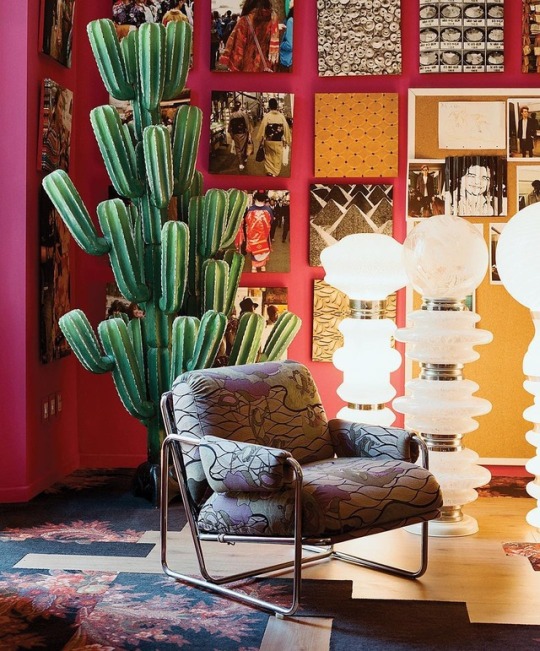
The Colorful World of Etro: There have been a lot of family businesses in fashion, and for good reason. Providing a clan is functional, the attendant mutual support can build, reinforce and protect a singular vision. Missoni, Versace and Hermès are a few examples. The Milan-based Etro, run by 78-year-old patriarch Gerolamo Etro, known as Gimmo, and his four children, is another. Known for a cheeky take on traditional luxury and wild, mismatched fabrics—especially its over-the-top paisleys—the family-owned-and-operated Etro has thrived in mainstream categories like menswear and womenswear, accessories and perfume by bucking the conventional practice of scaling up. Where others tend to hire experts or outsource to produce as they expand into new areas, the Etros have transcended their original mission of high-end textile design the old-fashioned way: with all hands on deck, learning as they go. “We were taught to be curious,” says Veronica Etro, the creative director of womenswear and the baby of the bunch at 43. Etro family values, she explains, mean “everyone was brought up to search for beauty, for the new.” Pictured is the office of Kean Etro, 53, creative director of menswear. Read the story 🖥: now, 📰: August 26. (🖊: Alexandra Marshall, 📸: @luca.campri) #WSJMagazine #Etro http://ift.tt/2vUrpsN
0 notes
Photo

Coats from Etro fall winter 2013
0 notes
Text
Paisley


Jeg faldt lige over denne Etro velour blazer med det gode gamle bandanamønster vi vel alle kender. Før nu har jeg ikke været i bekendtskab med mærket, men fint ser det ud. jakken er vild, paisley er vildt og velour er vildt - det her er magisk. Denne sag koster så også der efter, men hvis nogen skulle være interesserede i enten at tage et nærmere kig på jakken, eller at købe den kan man gøre det her.
Tobias
5 notes
·
View notes
Photo










Album d’onore 1994-1995
Museo Bagatti Valsecchi
a cura di Arianna Cimadori
foto Graziella Vigo
Agfa-Gavaert, Milano 1995, 95 pagine, testo in italiano e inglese
euro 40,00
email if you want to buy [email protected]
Un album di ritratti posati, in bianco e nero, realizzato in occasione della grande ristrutturazione di Palazzo Bagatti Valsecchi a Milano. Una galleria di personaggi famosi in visita al Museo, fotografati nell'arco di un anno.
Tra i tanti, ricordiamo: Elton John, Valentina Cortese, Federico Zeri, Alessandra Ferri, Matteo Thun, Giulietta Simionato, Vittorio Missoni, Gianfranco Ferrè e poi giornalisti, attori, registi, architetti, scrittori, tutti ripresi nelle storiche sale restaurate del Museo.
An album of posed portraits, in black and white, taken on the occasion of the great restoration of the Palazzo Bagatti Valsecchi in Milan.
A gallery of famous people visiting the museum, photographed over the course of a year. Amongst them we recall: Elton John, Valentina Cortese, Federico Zeri, Alessandra Ferri, Matteo Thun, Giulietta Simionato, Vittorio Missoni, Gianfranco Ferré, and then journalists, actors, producers, architects, writers, all pictured in the restored rooms of the museum.
orders to: [email protected]
ordini a: [email protected]
twitter:@fashionbooksmi
instagram: fashionbooksmilano
designbooksmilano
tumblr: fashionbooksmilano
designbooksmilano
#Album d'onore#Museo Bagatti Valsecchi#famous people#Natalia Aspesi#Gimmo Etro#Vittorio Solbiati#Donatella Pellini#Adelaide Acerbi#Versace#Gianfranco Ferré#Matteo Thun#Franca Sozzani#Maria Pezzi#Graziella Vigo#fashionbooksmilano
8 notes
·
View notes
